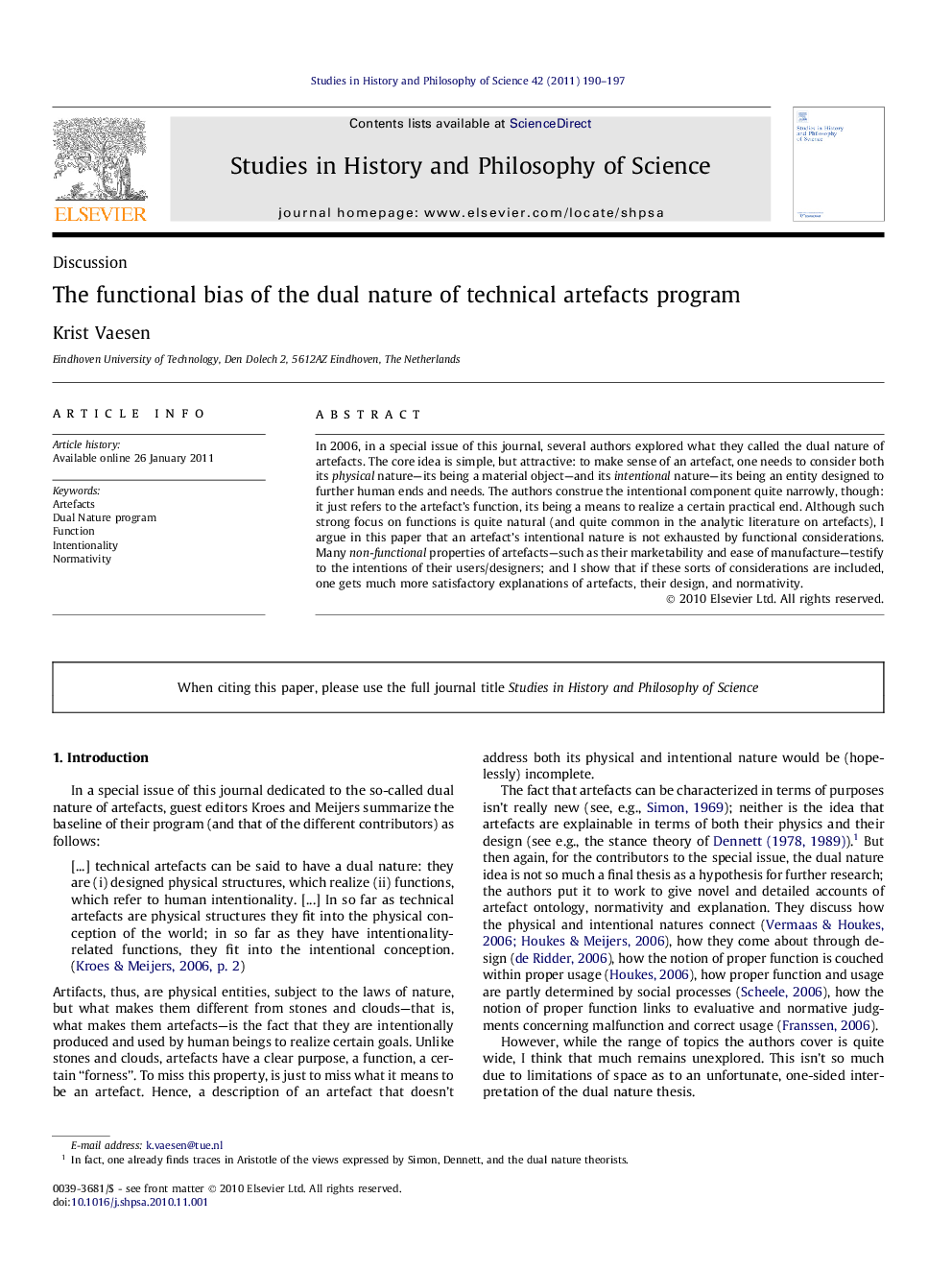| Article ID | Journal | Published Year | Pages | File Type |
|---|---|---|---|---|
| 1160572 | Studies in History and Philosophy of Science Part A | 2011 | 8 Pages |
In 2006, in a special issue of this journal, several authors explored what they called the dual nature of artefacts. The core idea is simple, but attractive: to make sense of an artefact, one needs to consider both its physical nature—its being a material object—and its intentional nature—its being an entity designed to further human ends and needs. The authors construe the intentional component quite narrowly, though: it just refers to the artefact’s function, its being a means to realize a certain practical end. Although such strong focus on functions is quite natural (and quite common in the analytic literature on artefacts), I argue in this paper that an artefact’s intentional nature is not exhausted by functional considerations. Many non-functional properties of artefacts—such as their marketability and ease of manufacture—testify to the intentions of their users/designers; and I show that if these sorts of considerations are included, one gets much more satisfactory explanations of artefacts, their design, and normativity.
